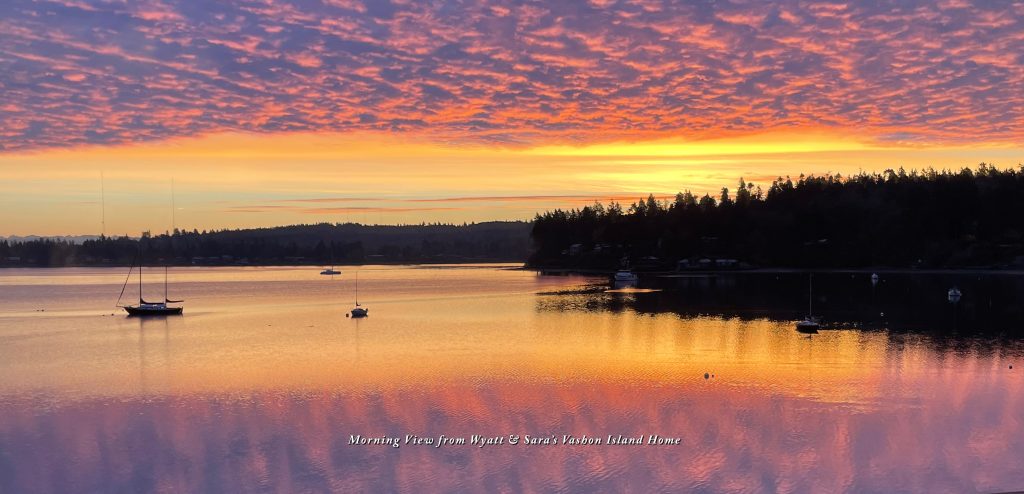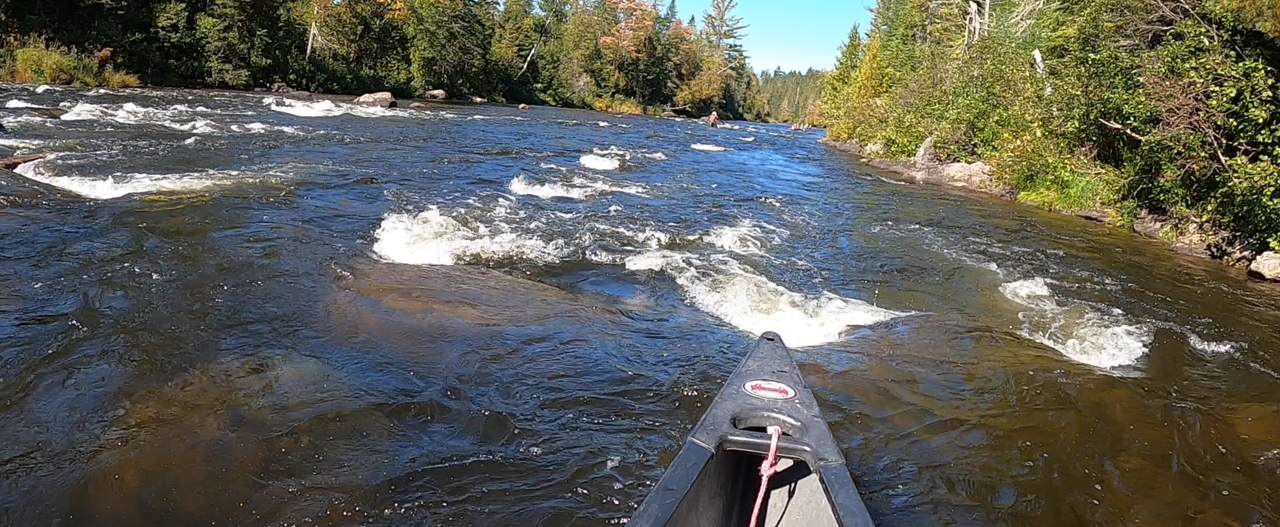We awoke to a mist rising over Heron Lake and the smell of coffee in camp. As we packed up our tents and got our gear ready for our first full day of paddling, Lani and Chris were cooking our breakfast of oatmeal (Scottish oats), bacon and eggs. They added some hash browns from the leftover potatoes we had the night before; It made for a great start for our second day.
We paddled through the mist, back to Churchill Dam, where we unloaded our gear again so it could be trucked around the first sets of rapids. (Transporting our gear turned out to be prescient, since one of our canoes capsized in the rapids. Had it been fully loaded we could have lost crucial equipment , food, or personal belongings.)
While we were waiting for the time that water was to be released from the dam, we visited the museum (Churchill Depot History Center) adjacent the dam. There were displays dedicated to logging and northern Maine living in earlier times. Kevin, the ranger who collected a lot of the material for these displays, pointed out some of the lesser known contraptions and answered our questions. We learned, for example how people used to utilized the used blades of two-man bow saws to keep bears from invading cabins.
Afterward, Lani gave us a brief talk about river paddling techniques and we practiced upstream ferrying in the current just below the dam. As soon as Chris returned from helping transport our gear, and there was sufficient water flow we would tackle the Chase Rapids, the first miles of whitewater canoeing on our trip.
For those who had seen the movie “Deliverance” or watched the Olympics, Chase Rapids might have seemed mild (Class II), but it was exciting nonetheless. Fast water and protruding rocks always provides a challenge, requiring quick thinking and confident navigation. There are always surprises, even for experienced paddlers, as one of our canoes found out later, capsizing and requiring a rescue.
Despite the overturned canoe, Chase Rapids was a load of fun. It was a gorgeous, sunny day, so the “swimmers” would have a chance to dry out or change clothes when we stopped next.
Shortly after the rapids, we made a snack stop at Bisonette Bridge, where the remnants of a washed out bridge are still apparent beneath the surface and parts of the bridge abutments are still visible. Then it was back in the canoes for some milder rapids and our next stop, for lunch, at Chisholm Brook, at the inlet for Umsaskis Lake. Lunches were usually sandwiches, some remaining salad fixings, and, occasionally some fruit.
After lunch, we paddled Umsaskis and proceeded under a bridge, in an area known as The Thoroughfare, and emerged on Long Lake where we spent the night at a campsite called Pine. We still had a view of the bridge, which was unfortunate since it connected a logging road which meant we endured the sound of occasional logging trucks rumbling through. We learned that they rarely use for their brakes, even on the bridge.
Dinner was kielbasa and beans, coleslaw and corn bread. It was another beautiful evening with a full moon, a starry sky and a warming campfire.
Second Day in the Allagash Wilderness Waterway – A Gallery
(Hover over photos to see captions. Click on individual photo to enlarge)

